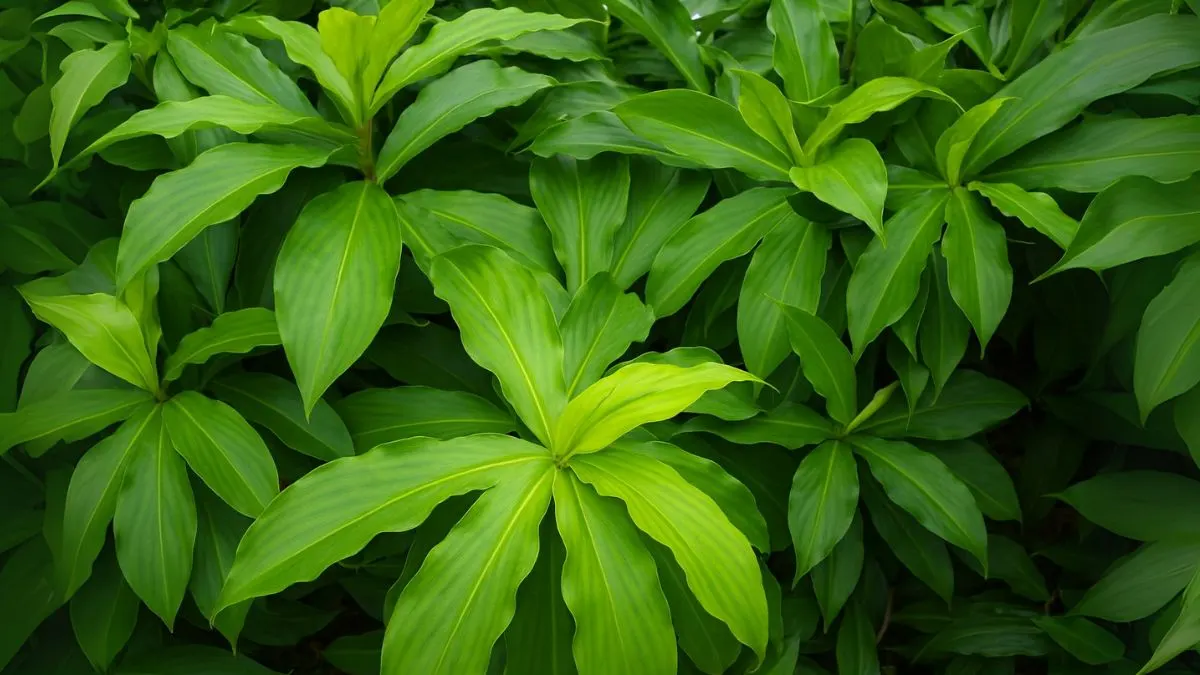If nature had a pharmacy, the insulin plant would definitely be one of its most prized treasures. Scientifically called Costus igneus, known as the insulin plant, this evergreen perennial is celebrated for both its striking looks and impressive medicinal value. From its spiral-shaped leaves to its role in helping control blood sugar, the plant is a perfect blend of beauty and purpose.
When I first saw an insulin plant growing in a friend’s garden, I was captivated by its lush green foliage and vibrant orange flowers. Only later did I learn that it wasn’t just ornamental—it carried a host of health benefits. That’s when I decided to grow one myself.
What Makes the Insulin Plant Special?

The insulin plant belongs to the Costaceae family and is often cultivated as a medicinal herb. It naturally thrives in warm and humid climates, which makes it ideal for tropical and subtropical regions. Interestingly, it has gained popularity not just in Asia but also in the USA, Canada, and other parts of the world as people look for natural solutions to manage lifestyle diseases.
Its most well-known use is that it helps to reduce high blood glucose level, making it highly sought after among people dealing with diabetes. Moreover, studies suggest that the plant may aid in weight management, adding to its list of holistic benefits.
Caring for the Insulin Plant
- Light and Climate: The plant thrives in warm and humid climates but adapts well to home gardens when given partial sunlight. If you’re growing it indoors, place it near a bright window where it gets indirect light.
- Soil Requirements: Insulin plants love rich, loamy soil with good drainage. Mixing organic compost with garden soil works wonders.
- Watering Needs: Keep the soil moist but avoid overwatering. In my own experience, watering twice a week was sufficient during the monsoon, but in dry seasons, a little more attention was required.
- Propagation: The football lilies propagate easily by offsets, but in the case of the insulin plant, stem cuttings are the easiest way to expand your garden. Simply cut a healthy stem, plant it in moist soil, and watch new shoots emerge in a few weeks.
Also Read: Plant These Perennial Asters Now for a Blooming Backyard Every Fall
Benefits of the Insulin Plant
Benefit |
Explanation |
Blood Sugar Control |
Leaves are traditionally consumed to help regulate glucose levels. |
Weight Management |
Its natural compounds may aid in weight management by improving metabolism. |
Digestive Health |
Known to support digestion and relieve constipation. |
Ornamental Value |
Bright green leaves and orange blooms make it an attractive garden addition. |
Personally, I’ve noticed how the lush greenery of this plant adds a tropical vibe to my garden while also being a great conversation starter about natural health remedies.
Varieties of the Insulin Plant
While Costus igneus is the most recognized, there are close relatives within the Costus family that offer similar ornamental appeal. Some have deeper green foliage, while others bear showier flowers.
Gardeners in Canada and the USA often grow it in pots indoors or in greenhouses, where temperature and humidity can be controlled. Its adaptability has made it one of the most popular herbal plants worldwide.
How People Use the Insulin Plant
Traditionally, people chew one or two fresh leaves daily to help reduce high blood glucose level. However, always consult a medical professional before adding any medicinal plant to your daily routine. In some parts of India, the leaves are dried, powdered, and mixed into teas or warm water.
For those outside tropical climates, you can still grow it in containers indoors. Even if you don’t consume it, its lush, spiral-shaped foliage makes it a charming ornamental plant.
Also Read: Balsam Flowers: The Old-School Annual That’s Making a Comeback!
Personal Experience with Growing Costus igneus
When I planted my first insulin plant, I wasn’t sure how well it would adapt to my semi-urban environment. To my surprise, it grew vigorously in a corner that received filtered sunlight. I used organic compost and ensured regular watering, and within months, the plant produced vibrant flowers. Watching it flourish gave me not only joy but also confidence to expand my collection of medicinal plants.
Conclusion
The insulin plant (Costus igneus) is more than just an ornamental. It’s a charming perennial bulb known for its unique foliage and medicinal value. With proper care, this plant thrives in warm and humid climates, and its benefits—ranging from helping reduce high blood glucose levels to potentially aiding in weight management—make it a wonderful addition to gardens worldwide.
If you’re looking to combine beauty with health, this plant is a must-have. Start small with a potted plant in your balcony or backyard, and you’ll soon realize why gardeners across Canada, the USA, and beyond are embracing this botanical marvel.






